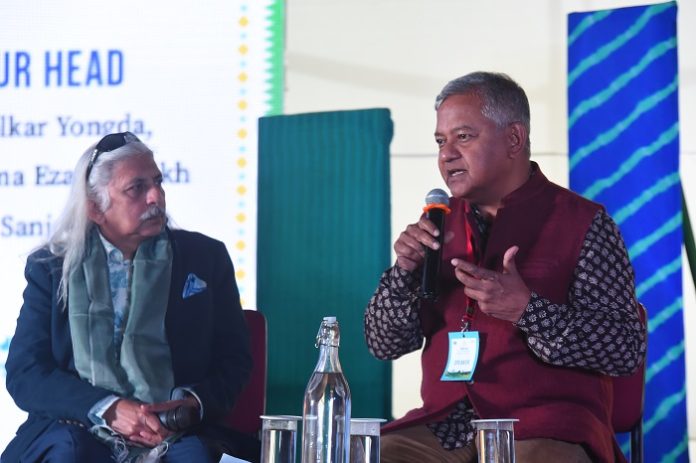The very first edition of the Sikkim Art and Literature Festival concluded amid applause and fanfare at historical city of Yuksom, Sikkim. Over the two days from 7 – 8 May the audience witnessed a variety of literary sessions, music and dance performances, yoga sessions and workshops.
The concluding day was made special with the presence of the chief minister of Sikkim Prem Singh Tamang. Addressing the audience Tamang said, “We are deeply honored to collaborate with Teamwork Arts, and we appreciate their generous support in organizing the Sikkim Arts and Literature Festival. We express our gratitude to Sanjoy K Roy, managing director of Teamwork Arts, for his commitment to opening doors to a wider cultural and literary world for our youth through his organization’s various art and culture initiatives.”
The program for the day continued with conversations and literary discourses on a number of topics.
Home to a unique blend of plains, valleys, lakes, glaciers and snow-capped mountains, the Khangchendzonga National Park falls within the Himalaya global biodiversity hotspot and has one of the highest concentrations of plants, birds and animal species in the Central or High Asian Mountains. The park is also an important biosphere reserve as its ancient original forests support many species of flora and fauna. The park was inscribed as the UNESCO World Heritage Site in 2016 and is the country’s first ‘mixed heritage’ site. In conversation with writer and biochemist Pranay Lal, joint director of Himalayan Zoological Park Dechen Lachungpa and divisional forest officer, Khangchendzonga National Park Sonam Norden Bhutia discussed the endlessly fascinating landscape of the Khangchendzonga National Park.
At another conversation with Swati Rai, architect Prashant Pradhan and divisional engineer of Buildings and Housing, Sikkim Government, Ashok Chettri observed on the evolution of the built environment across the state. Architectural styles in the Sikkim region have evolved in response to geography, climate and functionality. Buddhist and Tibetan influences have been key, as also symmetry and mathematical geometry. Local materials like bamboo, cane, mud and lime are part of the traditional architectural heritage whereas modern materials and styles are part of the built structures now.

The audience also witnessed an evocative session of poetry readings in the lap of nature. Nepalese poet Nawaraj Parajuli is a master of performance poetry and tours across the globe with his poetry collection. Karuna Ezara Parikh is a writer and a spoken word poet with works like Where Stories Gather and The Heart Asks Pleasure First. Both of the poets recited some of the best poems from their personal collection.
The conversation continued with a session titled Reading Room. At the session writers spoke about ways of seeing and recording that are often personally and culturally influenced. Tashi Chophel’s poetry collection How to Collect a Folk Tale is an ode to folktales and underlines the humility needed to understand stories passed down through generations. Moushumi Kandali’s The Black Magic Women is a collection of stories that combines fables and myths to capture the ethnic diversity of Assam. In a session of readings and conversations with associate professor Rosy Chamling, they spoke of the voice and nuance of their work.
The festival concluded with breath taking performances by renowned Rajasthani folk artist Kutle Khan. The audience was also treated to captivating performances by rock bands Still Waters Band and Guns from Countryside.

















